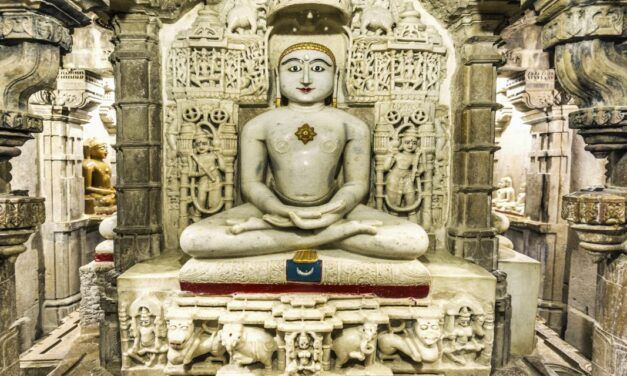a book review of
Selling the Soul of Christianity: Restoring the Christian Tradition
by Huston Smith
(HarperSanFrancisco, 2005)
This review first appeared in the Christian Research Journal, volume 29, number 4 (2006). For further information or to subscribe to the Christian Research Journal go to: http://www.equip.org
Walter Martin’s seminal text, The Kingdom of the Cults, warns that many non-Christian religions, despite their heretical doctrines, employ Christian terms in order to disarm unsuspecting Christians into believing that nothing that they teach is antithetical to biblical orthodoxy. Alternately, as Charles Swindoll memorably put it in a sermon, “Cults use our vocabulary, but they don’t use our dictionary.” Astute and apologetically engaged Christians, therefore, must cut through the semantic smoke screen used by Mormons, Jehovah’s Witnesses, Christian Scientists, or Theosophists, for example, and understand what they really mean when they use terms such as God, Christ, Trinity, and salvation. Unless Christians learn to discern the actual worldview of a professed Christian religion as compared to a biblical account of reality, counterfeits will go undetected.
Octogenarian and much-revered religious scholar Huston Smith presents just such a counterfeit. He claims to be a Christian (his parents were missionaries in China) who wants to explain and defend Christianity by exposing its very “soul” in this short, undocumented, conversational, and often autobiographical work. Many may be drawn to this book, despite its multitude of errors, because of his reputation. Smith has written many works, including a comparative religion text that a generation of students used, originally titled The Religions of Man (1958; retitled The World’s Religions in 1991). He was the focus of television journalist Bill Moyers’s five-part PBS special The Wisdom of Faith with Huston Smith.
A Common Core. Smith disclosed the heart of his worldview in the subtitle of his 1976 work, Forgotten Truth: The Common Vision of the World’s Religions. In that book—and throughout The Soul of Christianity—Smith claims that all the great religions express symbolically the same underlying truths; the symbols differ, but each religion in its own way serves as an avenue to spiritual reality. It is not surprising that the popular pantheistic philosopher Ken Wilber endorsed the 1992 edition of Forgotten Truth as “truly extraordinary.” Wilber and Smith share essentially the same approach to religion, which is called perennialism. Perennialists, such as Aldous Huxley (The Perennial Philosophy [1944]), believe that despite apparent disagreements between religions, they share a common (or esoteric) core. Once the outer (or exoteric) layers are peeled away, the inner reality of religions is revealed to be the same.
That supposed common core is not, however, the theology found in the Holy Bible. Smith gives this away in the prologue to The Soul of Christianity, where he writes, “The Good News of authentic religion—in this book, Christianity—is that [human] longing can be fulfilled” (p. xiii). Christianity is, for Smith, only one of the “authentic religions,” not the unique, definitive revelation of God to humankind for our redemption. Smith and his perennialist cohorts, rather than taking Christianity for what it is, disfigure its essential elements by forcing it to conform to that supposedly perennial truth. Throughout The Soul of Christianity, Smith follows his (erroneous) exposition of particular Christian doctrines with what he takes to be similar accounts from other religions.
When I first saw this book and its endorsement by two noted Christian leaders, I hoped that in his advanced age Smith had perhaps taken a turn toward historic orthodoxy, thus warranting this praise. That hope was quickly dashed. The Soul of Christianity is nothing less than a sabotage of Christianity wherein key terms and concepts are radically redefined in order to fit into a non-Christian worldview.
Smith’s stated aim is to “restore the Great Tradition” of Christianity, the body of belief that existed in the first millennium, “which all Christians can accept because it is the solid trunk of the tree from which its branches have sprung” (vii). Smith labors, as he does in Why Religion Matters (2000), to present a faith that will counteract the destructive effects of secularism and of religious fundamentalism. His introduction summarizes how these equal and opposite errors have adversely affected science, technology, business, education, media, arts, and government. The rest of the book is divided into three sections: “The Christian Worldview” addresses the basics of Christian doctrine; “The Christian Story” recounts the events of the Gospels and the early church; “The Three Main Branches of Christianity Today” gives an overview of the distinctives of Roman Catholicism, Eastern Orthodoxy, and Protestantism. This short review cannot refute the many theological, philosophical, and historical errors lodged in this book; instead, it will focus primarily on the first section, “The Christian Worldview.”
An Indistinct Oneness. Smith writes, “the Christian world is infinite,” that is, “the Infinite’s inclusiveness is a circle, an all-including circle that encompasses our finite universe and out of which it is impossible to fall” (3). He then quotes a passage from Jonathan Edwards in which Edwards exults in the majesty of creation. This, however, is out of place, because Edwards affirms the distinction between the infinite and perfect being of God and the finite and (now) fallen created universe (see Gen. 1:1; John 1:1; Rom. 1:18–32). Smith’s rejection of the Creator/creature distinction is further disclosed when he claims that “in descending to finitude, the singularity of the Infinite splays into multiplicity—the One becomes the many” (7).
The notion of the original One manifesting itself in the diversity of experience is utterly alien and hostile to the Christian worldview. Smith’s worldview more resembles that of the philosopher Plotinus (all emanates from the One) and some forms of Hinduism (all is One) than it does the Bible. (More on this below.) Reality, for Smith, is unitary and infinite; but this ultimate Oneness somehow manifests itself in the finite and multiple things of nature. He illustrates this idea by citing concepts from Hinduism and Islam. This description fits much of Hinduism, but it fails to describe either Islam or Christianity, since both affirm the absolute distinction between God and God’s creation.
Biblically, God is the self-existent, personal, and transcendent Creator of all that is. God cannot be reduced to an impersonal category of “the Infinite” that wears the differing masks of all the “authentic religions.” God, rather, is a being who is present everywhere, but God’s being (God’s infinite, perfect nature) is never identified with any aspect of creation except in the once-for-all incarnation in the God-man Jesus Christ (John 1:1–3, 14; Phil. 2:5–11). Even within the one person of Christ, His (Christ’s) divine and human natures are distinguished, but “without confusion, without change, without division, without separation,” as the Counsel of Chalcedon put it in AD 451.
Smith believes that we as humans suffer from ignorance of our true nature as part of the One. Smith suggests that when Jesus said “the Kingdom of God is within you” (Luke 17:21), He meant that “everything that is outside us is also inside us” (10). That is, Jesus was referring to the nature of the human self as divine. Smith illustrates this by quoting someone as saying, “I may be far from God because I may be far from my own true self” (10). The context makes it clear, however, that Jesus was not teaching that the kingdom of God is present in people because they are divine, but rather that the Kingdom was present in Himself, the King, who is divine. This misinterpretation exemplifies what James W. Sire calls “worldview confusion” (see his Scripture Twisting [1980]). Smith illicitly imposes his pantheistic worldview on biblical texts here and throughout his book. Let the reader beware.
A Failed Account. When Smith summarizes the Christian worldview into a single paragraph (33), he fails to mention the crucial themes of Scripture: creation, fall, and redemption. He amazingly also omits any reference to Jesus Christ Himself, who is the Lord of the universe and the only Mediator between God and human beings (Matt. 28:18; Acts 4:12; 1 Tim. 2:5).
Smith also denies the reliability of the New Testament (158). He redefines the meaning of the incarnation and the virginal conception of Jesus (97–102; 120–21), the atonement (which he reduces to compassion without any reconciliation, 102–113), and the resurrection (which he says was not physical, 73–84; 118–19). Against the warnings of Jesus and His apostles (e.g., Matt. 25:31–46), Smith affirms universal salvation (12).
Smith claims that “the key to unlocking the truths of Revelation is symbolism” (33). It is true that the Bible contains symbolism, but that symbolism must be interpreted through the biblical worldview from which it was written. Further, despite the Bible’s wealth of symbolism, it nevertheless also speaks about literal and historical events that define God’s character and actions in history (2 Pet. 1:16). The symbols never serve to undermine the historicity and specificity of Christian doctrine. Smith, on the contrary, thinks that when the symbols are decoded properly (by him), Christianity ceases to be exclusive and unique in its disclosure of God.
A Hindu View. It is not Christianity that sets the terms and agenda of Smith’s investigation, but rather a kind of Hinduism. Consider Smith’s compression of the Christian worldview into one sentence: “The world is perfect, and the human opportunity is to see that and conform to that fact” (33). The worldview betrayed by this statement is that of nondualistic Hinduism: all is Brahman (an impersonal god), all is One; if anything seems imperfect, it is only a problem of perception, not reality. This is a million miles away from the gospel truth that we have rebelled against God’s perfection and need the work of Christ to be saved (1 Cor. 15:1–3).
I conclude with one of Smith’s most egregious statements, which he claims is part of “the Christian story.” He writes that at Jesus’ baptism His (Jesus’) “third eye” was opened (41). This further verifies that Smith sees Christianity through an essentially Hindu lens. In Hinduism, the third eye is considered to be one of the chakras (i.e., energy centers) of the human body. Awakening the third eye through yoga means that one has intuited or “seen” one’s own innate spiritual power, if not deity. Hinduism teaches that this is possible for anyone who goes through the right yogic practices.
Contrary to Smith, former Hindu Rabi Maharaj says, “Jesus was not enlightened. He is the light of the world!” Christ conquered the powers of sin and darkness through His life, death, and resurrection and He offers us eternal life through faith in Him (John 3:16; Col. 2:13–15; 1 Cor. 15; Eph. 2:8). This glorious revelation, and not Huston Smith’s nefarious counterfeit, is the gospel of God, the soul of Christianity (see Gal. 1:6–9; 1 John 4:1–4).
— reviewed by Douglas Groothuis








